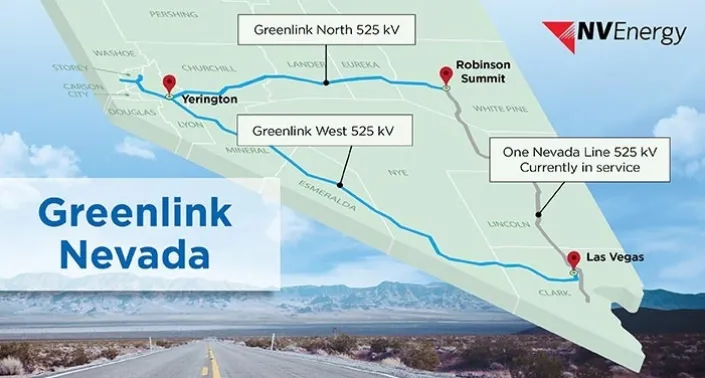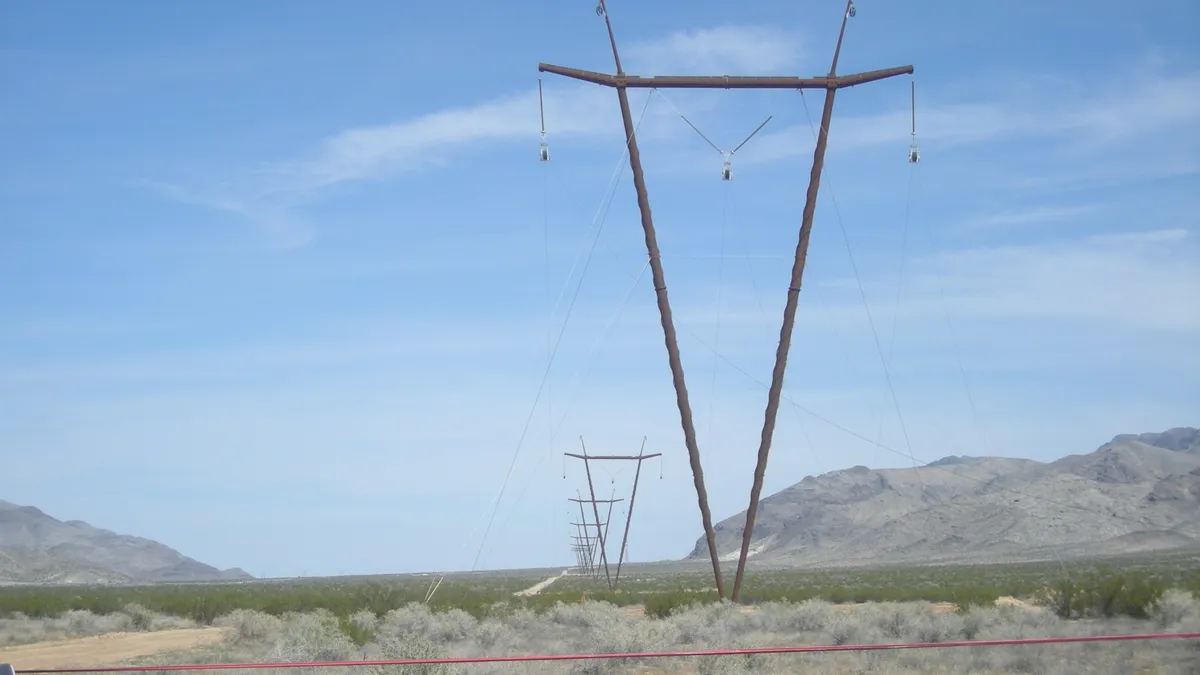Dive Brief:
-
The Federal Energy Regulatory Commission Wednesday approved three sets of incentives for NV Energy, a Berkshire Hathaway Energy subsidiary, to build its roughly $2.5 billion Greenlink Nevada transmission project.
-
FERC dismissed arguments the incentives would needlessly increase costs – arguments raised by the Nevada Bureau of Consumer Protection, Public Citizen and MGM Resorts International and Caesars Enterprise Services. The Nevada Public Utilities Commission had asked FERC to be aware of how its decision would affect consumers.
-
While FERC Commissioner Mark Christie voted in favor of the incentives for NV Energy, he said he supported ending two transmission incentives and that the agency should consider ending a third one. “Revisiting all these incentives is imperative at a time of rapidly rising customer power bills, as demonstrated by the Nevada Protection Bureau,” he said.
Dive Insight:
FERC’s decision comes during a critical period for transmission development in the United States. A build-out of the transmission system is seen as needed to bolster grid reliability amid increasingly extreme weather and to provide access to renewable energy to meet greenhouse gas reduction goals.
At the same time, FERC is considering options for ensuring transmission facilities are built at the lowest cost possible. It is also considering revising the incentives it grants for transmission construction under a policy adopted in 2006.
NV Energy’s Greenlink project would create a 525-kV triangular transmission network in Nevada that would improve grid reliability and provide a pathway for renewable energy, according to the utility company. The PUC last year fully approved the project, with its western leg set to enter service in late 2026 and its northern portion slated to be operating in 2028, according to FERC’s decision.

To support its project, NV Energy’s utilities — Nevada Power and Sierra Pacific Power — asked for three incentives that they said match Greenlink’s risks and challenges: recover all prudently incurred costs if the project is abandoned or canceled for reasons outside of NV Energy’s control, the deferral of pre-commercial costs through the creation of a regulatory asset, and to include all “construction work in progress,” called CWIP, in the utilities’ rate base instead of waiting for a rate case after the project is built.
The incentives apply to NV Energy’s transmission-only and large customers subject to FERC’s jurisdiction and the utilities’ retail customers are unaffected, according to NV Energy.
FERC dismissed arguments the incentives weren’t needed because a state law mandated the transmission project.
“The statute by its terms does not contain a legal requirement to construct Greenlink Nevada, nor does it appear to attach negative legal consequences to failure to complete construction,” FERC said.
In granting the “abandoned plant” incentive, FERC rejected arguments the incentive violated the principle that an electric facility must be “used and useful” before consumers would be asked to pay for it.
Citing an appeals court decision, FERC said “a utility may include ‘prudent but canceled investments’ in its rate base as long as the commission reasonably balances consumers’ interests in fair rates against investors’ interest in maintaining financial integrity and access to capital markets.”
The creation of a regulatory asset for pre-commercial costs will give NV Energy added up-front regulatory certainty and help it attract capital, according to FERC.
The approved CWIP incentive will help ease NV Energy’s financial pressure by providing upfront cost-recovery certainty, improved cash flow and reduced interest expense, FERC said. As is its policy, FERC said it approved the incentive without considering the financial resources of NV Energy’s parent company, Berkshire Hathaway.
Christie said he agreed the requested incentives should be granted under FERC’s policy, but that the policy needs to be revisited to make sure the costs and risks of building transmission facilities are not “unfairly inflicted” on consumers while transmission developers and owners reap the financial rewards.
“If the commission determines it is appropriate to channel risks to consumers, those risks must be carefully weighed and considered and not simply awarded in an exercise of ‘check-the-box,’” he said, noting FERC’s decision failed to consider how it would affect NV Energy’s customers.















